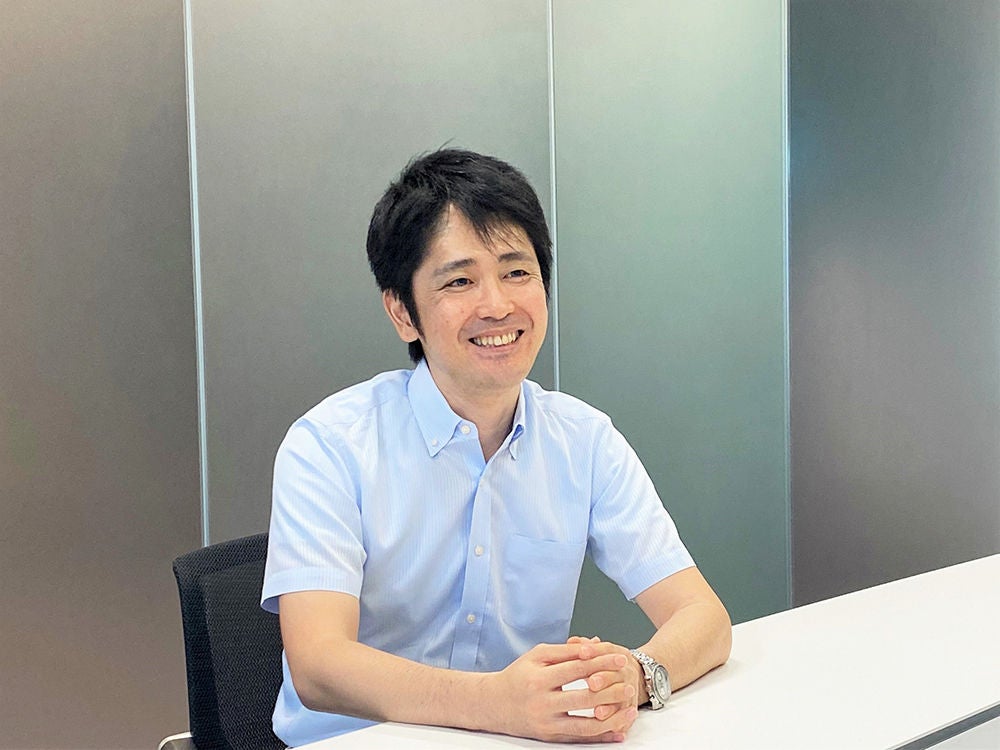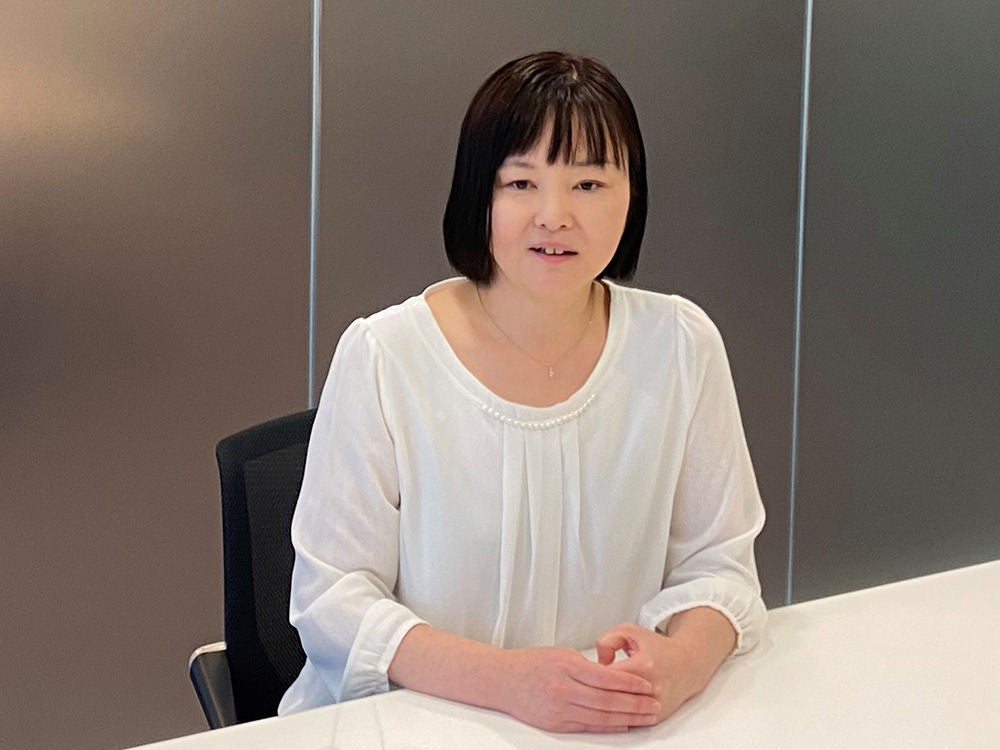Yusuke Sano
Ocular surface Team
Ophthalmology Marketing Group 1
Japan Business Japan Sales and Marketing Division
Life cycle management (LCM) in pharmaceuticals refers to the continuous improvement of existing drugs to increase their product value by expanding the range of diseases for which they are indicated, adding new dosage forms, and delivering added value in terms of efficacy and safety. As a complement to new drug development, LCM of existing drugs is an essential factor in Santen’s commitment to delivering appropriate treatment to as many patients as possible and to realize “Happiness with Vision.”
Today, we would like to introduce Santen's thoughts on the development of LCM products through a behind-the-scenes look at the development of an ophthalmic cream, an anti-allergy eye drop LCM product, in Japan.
In pursuit of an “itch-free world”
Allergic conjunctivitis is a condition in which allergens (substances that cause allergic reactions) such as pollen adhere to the surface of the eye, causing inflammation of the conjunctiva. Many patients suffer from symptoms such as severe itching and redness of the eyes which leads to decreased quality of life (QOL), and the first line of treatment is typically anti-allergy eye drops.
Conventional treatment in Japan generally involves the use of eye drops to suppress itching only after the itching begins. Seeking to develop the best allergy treatment for patients and enhance their QOL, Santen arrived at the concept of an “itch-free world,” the idea being to prevent itching before it starts. Because recurrent itching can also impact a patient’s personal life and leisure time, Santen believed that dealing with symptoms before they appear was critically important.

Yusuke Sano of the Ophthalmology Marketing Group No. 1, who believed that the first key step would be to increase the number of people who support the concept, described the team’s approach:
“Allergic symptoms in the eye are difficult to treat because sometimes they are not directly linked to vision loss or blindness, making it difficult for people to understand the challenges involved in treatment. As such, the first step, conducted with the support of medical professionals, was to collect data that demonstrated the extent to which patient QOL was degraded when itching occurs. As the data came to light, many ophthalmologists began to appreciate the usefulness of proactive eye drops (i.e., using eye drops in compliance with the dosage during disease onset, even if itching has not yet begun, to reduce the frequency of itchy eyes), and support for Santen’s approach began to grow. Through various initiatives, such as the development of Kayumi-Dasu, an ophthalmologist-supervised application*1 for patients, we felt that awareness of allergy treatment among ophthalmologists and patients was beginning to grow.”
Understanding the patient experience reveals need for a new dosage form
In the case of allergic conjunctivitis, interviews with patients and doctors, together with information from academic papers and other sources, made it clear that many patients were only using their eye drops when their eyes felt itchy, others could not use eye drops during the day due to work or school. And also, others—including children and the physically challenged—struggled to apply the eye drops correctly. Treatment efficacy depends on the patient following the recommended dosage and administration.
Santen had already developed and delivered LCM anti-allergy eye drops to patients that reduced the frequency of application, but embarked on the development of a new LCM after realizing there was a need for a dosage form that was easier for patients to use.
Cream formulation chosen from a large number of candidates
Toyomi Nishimura, who led the project from conception of the dosage form through development, had this to say:
"We are very pleased to be able to offer this product to our customers. The decision was made to proceed with LCM development without sticking to the dosage form of eye drops, and a variety of dosage forms were initially considered as candidates. To select the optimal formulation from among these candidates, we interviewed physicians and patients regarding their needs and usability. Then, from various perspectives, including safety, convenience, and the probability of success in development, project members from various departments, including clinical development, regulatory affairs, and marketing, held numerous discussions to determine the best way forward. Ultimately, we conceived of a cream formulation that is easier for patients to use and has a low direct physical burden.

Toyomi Nishimura
Pharmaceutics and Pharmacology Department
Pharmaceutical Development
Product Development Division
“The development of Santen's first cream formulation, on the other hand, was a process of trial and error. In developing the product, we utilized our expertise in ophthalmology and collaborated with partner companies that have the necessary expertise in dermatology and other areas to design the formulation. Despite the hurdles we had to overcome, I also had fun taking on new challenges. I was relieved when the results of the planned clinical trials came in, and at the same time excited about the future potential of the cream formulation. Although there was a possibility that the development plan might be delayed depending on the study design, project members’ ‘strong desire to bring this product to market as soon as possible for the sake of patients’ and their collective wisdom enabled us to proceed with the development while negotiating with the regulatory authorities.”
Santen’s mission is to continue to provide important value to patients and society in respect to the prevention, diagnosis, and treatment of eye diseases through products and services created based on our expertise in ophthalmology and from the patient's perspective. When it comes to LCM development at Santen, members in R&D, marketing, and other departments work together as one team to understand the needs of healthcare professionals and patients and then provide value to patients. We are doing our utmost to create a future in which as many patients as possible can lead happy and fulfilling lives, and to realize a society in which people around the world can experience “Happiness with Vision.”
- Kayumidasu smartphone app helps people deal with itchy eyes caused by pollinosis. It provides information on caution levels and countermeasures for itchy eyes and other eye symptoms based on daily weather forecasts, and includes an eye drop notification function to support "preemptive instillation" during the onset period.(Japanese only)
https://www.santen.com/jp/healthcare/eye/library/allergic_conjunctivitis/kayumidas
For more information on “Ophthalmic Creams for the Treatment of Allergic Conjunctivitis,” click here:
The information provided in this article is intended for educational purposes only and is specific to a prescription product that is currently approved for use only in Japan. This product has not received regulatory approval in any other countries. Please be aware that regulatory requirements and medical practices vary from country to country, and the information presented here may not be applicable outside of Japan.



